It's fascinating to learn that Binondo, Manila's Chinatown is recognized by some sources as the world's oldest Chinatown, long before the label "China town" was created. Taking a walk down history lane through the Chinatown Museum made me even more fascinated about Binondo.
History of Binondo
Established in 1594, Binondo was originally a settlement for Chinese Catholic converts. The term may have originated from "binundok" which pertains to the originally mountainous terrain, as suggested by National Artist Nick Joaquin. Past the entrance of the museum, where tickets are presented, a short video presentation mentions that that as well as other rich details about Binondo's history in general. There are benches so you can watch while seated.
Inside the Museum
The museum seems to replicate the same shape as the old Binondo's look in this map below, although the galleries displayed are not exactly the same.
There's also a map close to the video presentation area. Not in photo (but on the video below), the map lights up an area of Binondo when you press a button so you'll find out where a certain area is.
Chinatown Museum Video
Here's the a short image compilation video of the museum.
Binondo Church
First stop inside the gallery is the Binondo Church. It's also known as the Minor Basilica of Saint Lorenzo Ruiz and was previously called the Our Lady of the Most Holy Rosary Parish.
The church was founded in 1596 but was destroyed in 1762 during the British Occupation of Manila. A new building was constructed and completed on the same site on 1852.
Three separate images of the church's facade from left, middle and right. ⬆️
Indulgence Certificate
There was such a thing as an "Indulgence Certificate" before where punishment for sins are supposedly reduced through monetary compensation. Thank Pope Pius V for banning it in 1567.
Looks like a Buddhist temple in neon. ⬇️ After all, most Chinese are followers of Buddhism even if Binondo was originally for Chinese Catholic converts.
Alcaiceria of San Fernando
Alcaiceria refers to bazaar and finds its origins from the Moors and was passed on the Moorish parts of Spain, then eventually the countries conquered by the latter for Christianity.
The Alcaiceria of San Fernando marker in 1762 was declared a National Treasure in 2015.
Above is the actual Spanish text with English translation, and below the text as it appears on the marker.
Most of the items in the stall beside the marker are local handicrafts which are still present in some provinces of the Philippines today. They may not be accurate representations of what products were sold at the time but the newer generation of kids, specially those from the metro may not even know what these are.
Trading used to be in barter form, where goods are exchanged for another product and not paid in money.
And more local products, including the coal-heated iron are on display (center below). I got to use that old school iron back in the late 80's. It looks like a present day flat iron except that it's powered by hot coal and locked safely inside.
Next is a wooden coconut grater. I've seen my mother use one when preparing coconut milk (gata) as an ingredient for desserts served during special occasions. It's no different from modern day grating devices except of course that its huge. You have to be seated on one end of the equipment to keep it in place while scraping an open coconut half onto the blade to separate the meat from the husk.
Here's a bakery or panaderia featuring local baking equipment (mostly made of wood).
The panaderia from another angle.
More cooking equipment, including a brick oven and pots made of clay.
Beds with posts were mostly a luxury which only the rich can afford back then.
Sungkaan for a Game of Sungka
A sungkaan is for entertainment purposes on a game of sungka. In some areas, the game is only played during a wake.
Rules:
It starts by distributing an even number of shells on each hole and two empty heads. Each row is assigned to a head. Players will decide who starts by whatever means; it's mostly through toss coin or paper-scissor-stones.
The first player then carries all shells from the far end of the row and distributes one shell each to every hole including the head, except that of the opponents head. If it falls on a hole filled with shells, the process continues. If it falls on the player's own head, a new round is started from any of the seven holes on the row. If it falls on an empty hole on his own side, all shells on the opposing side is captured (if it's not empty) including the last shell dropped on his side and added to his head. The current player's turn ends when the last shell falls into an empty hole on the opponent's row. The other player then continues the process. The game ends once all shells are collected to the heads, with the player collecting more shells emerging as the winner.
Taller de Carpenteria
A few items from a taller de carpenteria or a carpenter's shop.
Fumadero Publico de Anfion
I have no idea what exactly this is but based on some information online, it means "Public Opium-Smoking Room." Back in the 19th century, opium was their version of cigarette smoking. It was even traded for medicinal purposes. Samurai X just came to mind. 😅
Binondo was the First Financial District
Escolta, an area of Binondo was once considered the "Wall Street of the Philippines" due to the proliferation of insurance companies, banks and other financial institutions before World War II.
Center of Commerce
Numerous brands, particularly distilleries and cigar factories also find their origin in Binondo, including Destileria La Fortuna.
A mini-informative section showing the process involved with distillery.
An actual barrel used to age liquor with the old school style faucet for pumping out the contents.
La Insular Cigar and Cigarette Factory
The Insular Cigar and Cigarette Factory's origins in photos:
It was a known landmark in Binondo as it's a huge cigarette factory. Unfortunately, it was destroyed by fire during World War II.
Looks like a European cigar:
An actual telephone:
I can imagine the Graham-Bell era with it.
Above and below looks like a mini-hardware shop because of the presence of coloring or painting materials, match sticks, kerosene (presumably for kerosene lamps) and more.
A small drawer possibly used to keep hardware shop items safe.
Old printed newspaper issues and other publications. I don't think they were necessarily from or about Binondo.
La Solidaridad, stands out amongst the reprinted copies here. It was published from 1889 to 1895 by Filipino exiled reformists and their supporters to disseminate information about the Reform Movement against Spain at that period.
The walls and even the floor are covered by newspaper issues.
While most are local publications, there were some which were known world media outlets at that time. They are labelled by years or decades released.
There is an entire cabinet wall full of old school comics.
Pharmacies were already present in old Binondo.
One of such was the Botica de San Fernando.
An cabinet is filled with herbs and plant-based medication in this section of the gallery.
I've opened all the mini-drawers to see what's inside. They are protected by some of form plastic glass encasing. But the contents are still visible, along with information about the item and what it was intended for, medicinally.
You'll find all sorts of seeds, dried flora and fauna that are typical of traditional Eastern Oriental medicine.
Chinese cuisine heritage is expectedly featured too.
Roasted Peking duck hanging by the hook will greet you by the door towards the Polland Hopia factory display stand. They have been making hopia since 1966.
Still on food, here's a tableria with the chocolate raw ingredient, cacao.
Compañia de los Tranvias de Filipinas
The Philippines already had a tramway company which started operation in 1888.
But they weren't powered by steam just yet and were actually similar to horse-drawn carriages, although bigger.
More old photos of the tranvia system:
A more modern version of the tranvia in 1902. Sources say the Philippine's tramway system was the envy of Asia at the time.
Manila Electric and Rail Company Origins
Present-day MERALCO or the Manila Electric and Rail Company find its business origins in the train system.
For music, there's a gramophone in one corner. It did play music but through USB. 😅 So they must tweaked the mechanism to make it playable like that of an MP3 player.
A genuine old mail box:
Similarly, an authentic mail man's bag:
This one's supposedly a weighing scale. I have no way of knowing if there was no note. It was from the Commercial Control Corporation in 1948.
Another section (but not in photo) featured one of the schools in Binondo.
Below is a typewriter (millennials will know). Above looks like an antique type of cash register.
Finally, post cards summarizing the history of Binondo before you hit your way towards the exit.
Chinatown definitely has a history of connections from its foundation during the Spanish period to the short lived British occupation, the American era, and to what it is today.
Hashtag #ChinatownMuseumPh for the snaps. Everything inside the place is Instagrammable anyway. But learning about its history is even more interesting.
More Information
Chinatown Museum is located at the 4th floor, Annex A of the Lucky Chinatown Mall in Reina Regente Street, Binondo, Manila. They're open from 10 AM to 6 PM daily.
Phone Number: (02) 8293 2584
Website: www.chinatownmuseum.org
Facebook: www.facebook.com/ChinatownMuseum
Instagram: www.instagram.com/chinatownmuseum
Further reading:






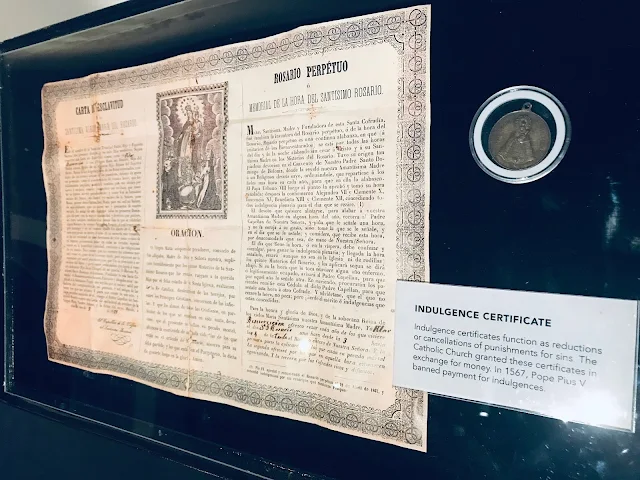


















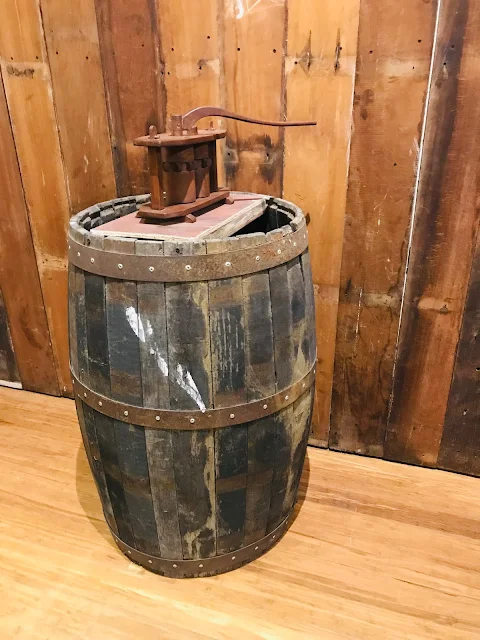
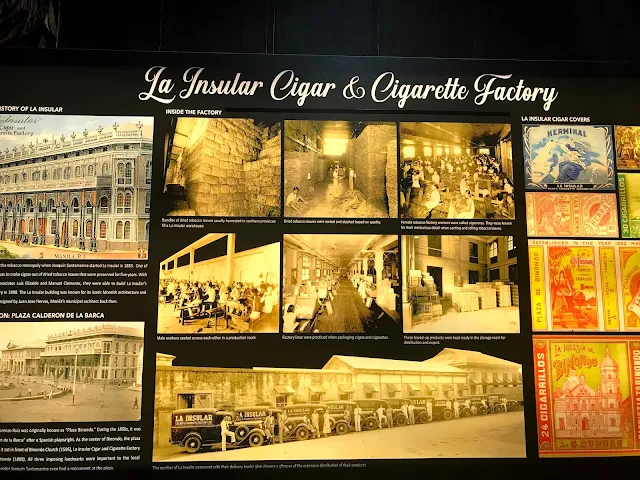



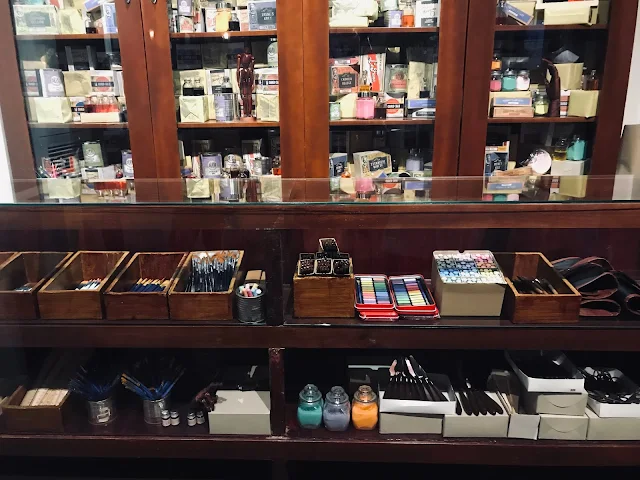


























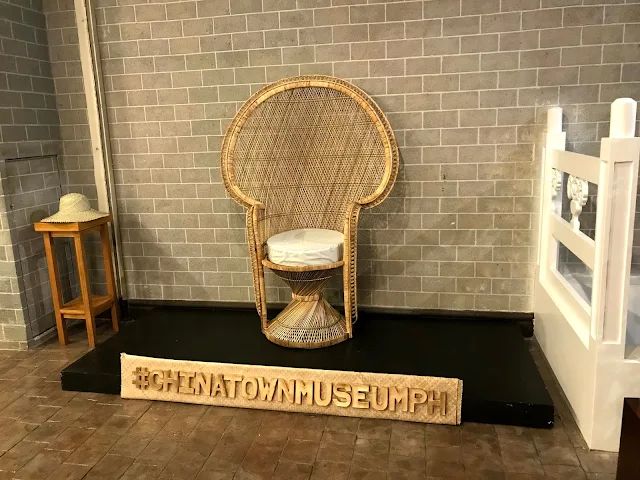

Post a Comment